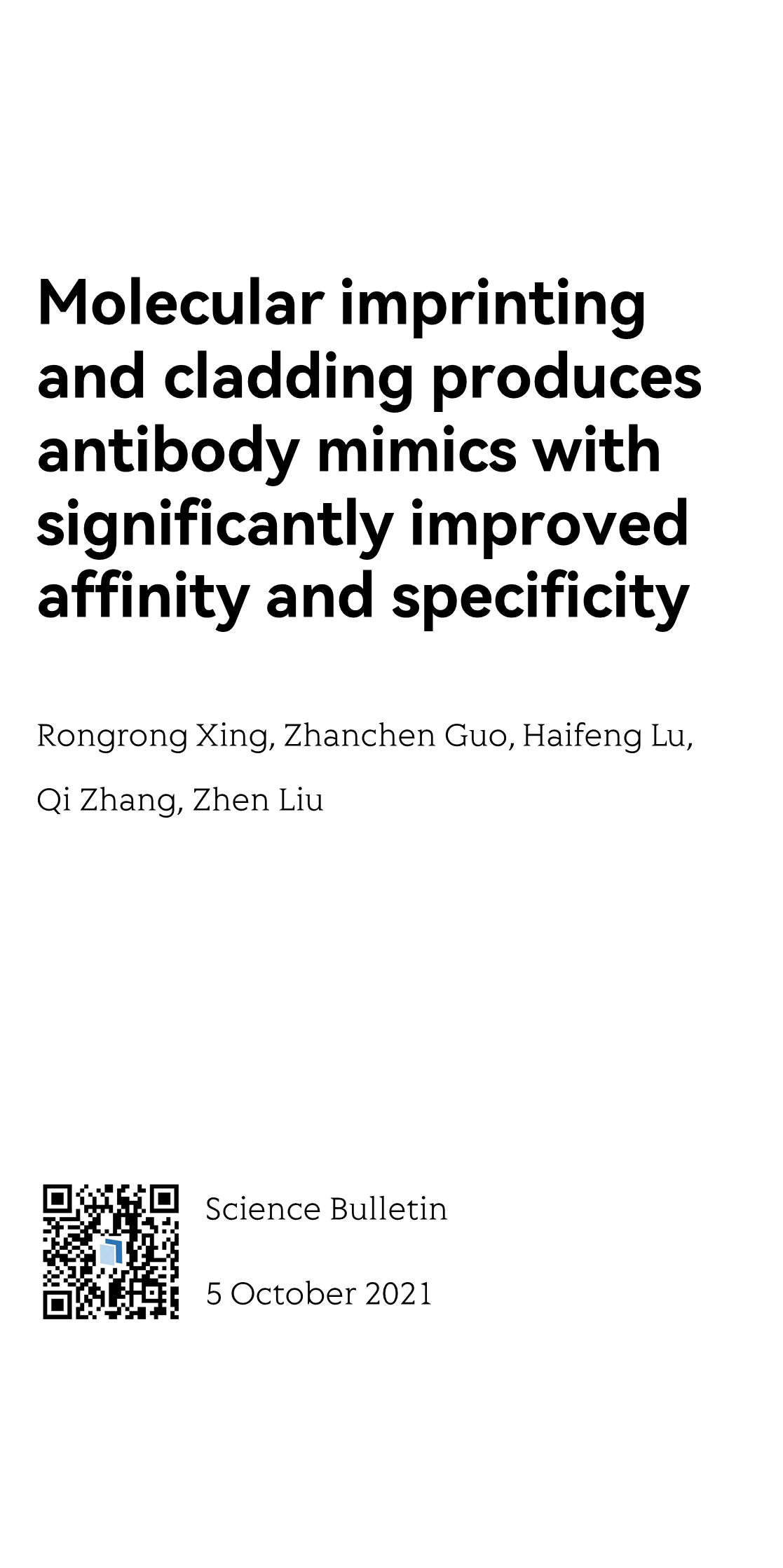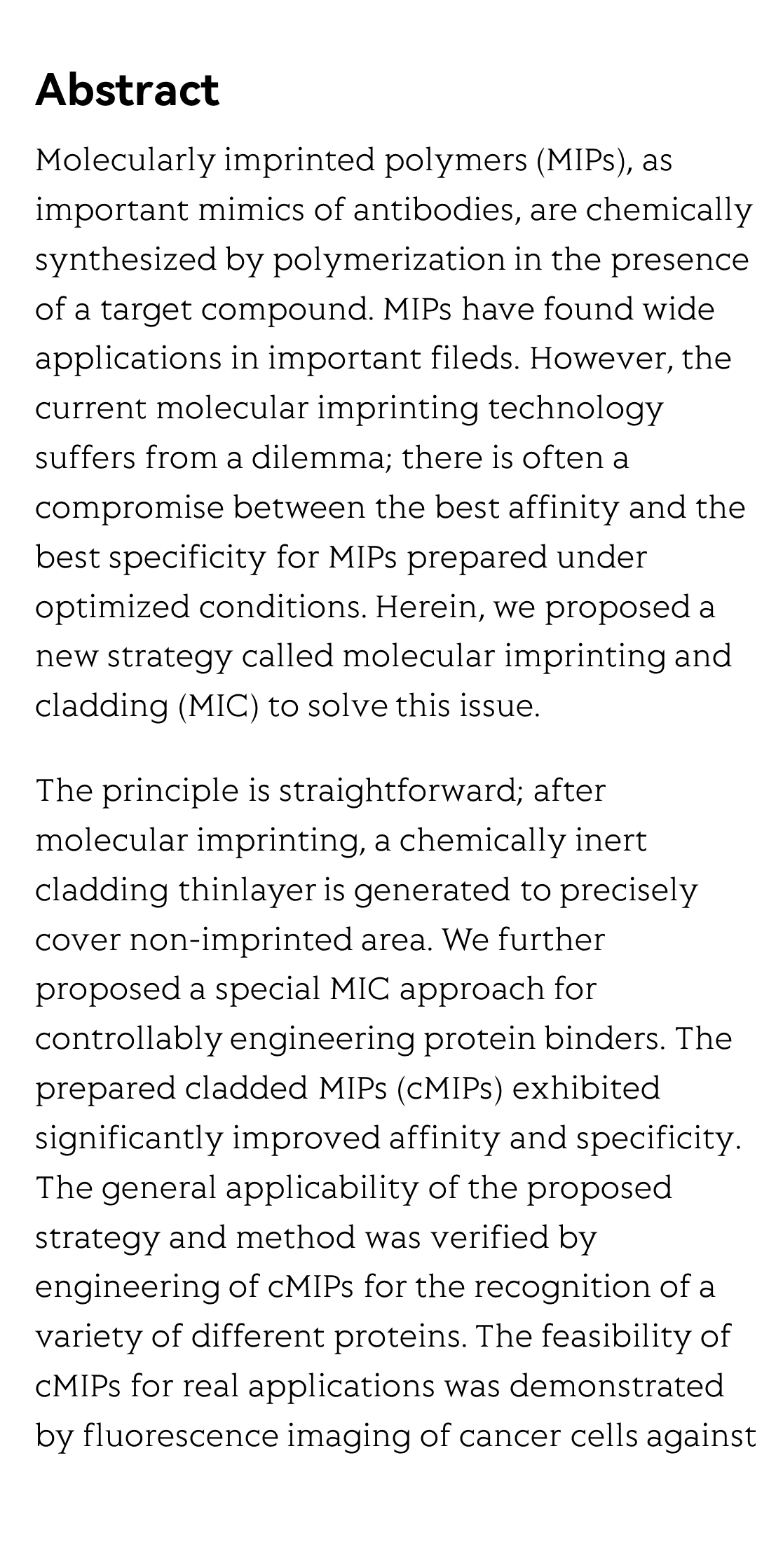(Peer-Reviewed) Molecular imprinting and cladding produces antibody mimics with significantly improved affinity and specificity
Rongrong Xing 邢荣荣, Zhanchen Guo 郭展辰, Haifeng Lu 卢海峰, Qi Zhang 张齐, Zhen Liu 刘震
State Key Laboratory of Analytical Chemistry for Life Science, School of Chemistry and Chemical Engineering, Nanjing University, Nanjing 210023, China
中国 南京 南京大学化学化工学院 生命分析化学国家重点实验室
Science Bulletin, 2021-10-05
Abstract
Molecularly imprinted polymers (MIPs), as important mimics of antibodies, are chemically synthesized by polymerization in the presence of a target compound. MIPs have found wide applications in important fileds. However, the current molecular imprinting technology suffers from a dilemma; there is often a compromise between the best affinity and the best specificity for MIPs prepared under optimized conditions. Herein, we proposed a new strategy called molecular imprinting and cladding (MIC) to solve this issue.
The principle is straightforward; after molecular imprinting, a chemically inert cladding thinlayer is generated to precisely cover non-imprinted area. We further proposed a special MIC approach for controllably engineering protein binders. The prepared cladded MIPs (cMIPs) exhibited significantly improved affinity and specificity. The general applicability of the proposed strategy and method was verified by engineering of cMIPs for the recognition of a variety of different proteins. The feasibility of cMIPs for real applications was demonstrated by fluorescence imaging of cancer cells against normal cells and immunoassay of C-peptide in human urine.
This study opened up a new avenue for controllably engineering protein-specific antibody mimics with excellent recognition properties, holding great prospective in important applications such as disease diagnosis and nanomedicine.
Light-induced enhancement of exciton transport in organic molecular crystal
Xiao-Ze Li, Shuting Dai, Hong-Hua Fang, Yiwen Ren, Yong Yuan, Jiawen Liu, Chenchen Zhang, Pu Wang, Fangxu Yang, Wenjing Tian, Bin Xu, Hong-Bo Sun
Opto-Electronic Advances
2025-03-28
Double topological phase singularities in highly absorbing ultra-thin film structures for ultrasensitive humidity sensing
Xiaowen Li, Jie Sheng, Zhengji Wen, Fangyuan Li, Xiran Huang, Mingqing Zhang, Yi Zhang, Duo Cao2, Xi Shi, Feng Liu, Jiaming Hao
Opto-Electronic Advances
2025-03-28





